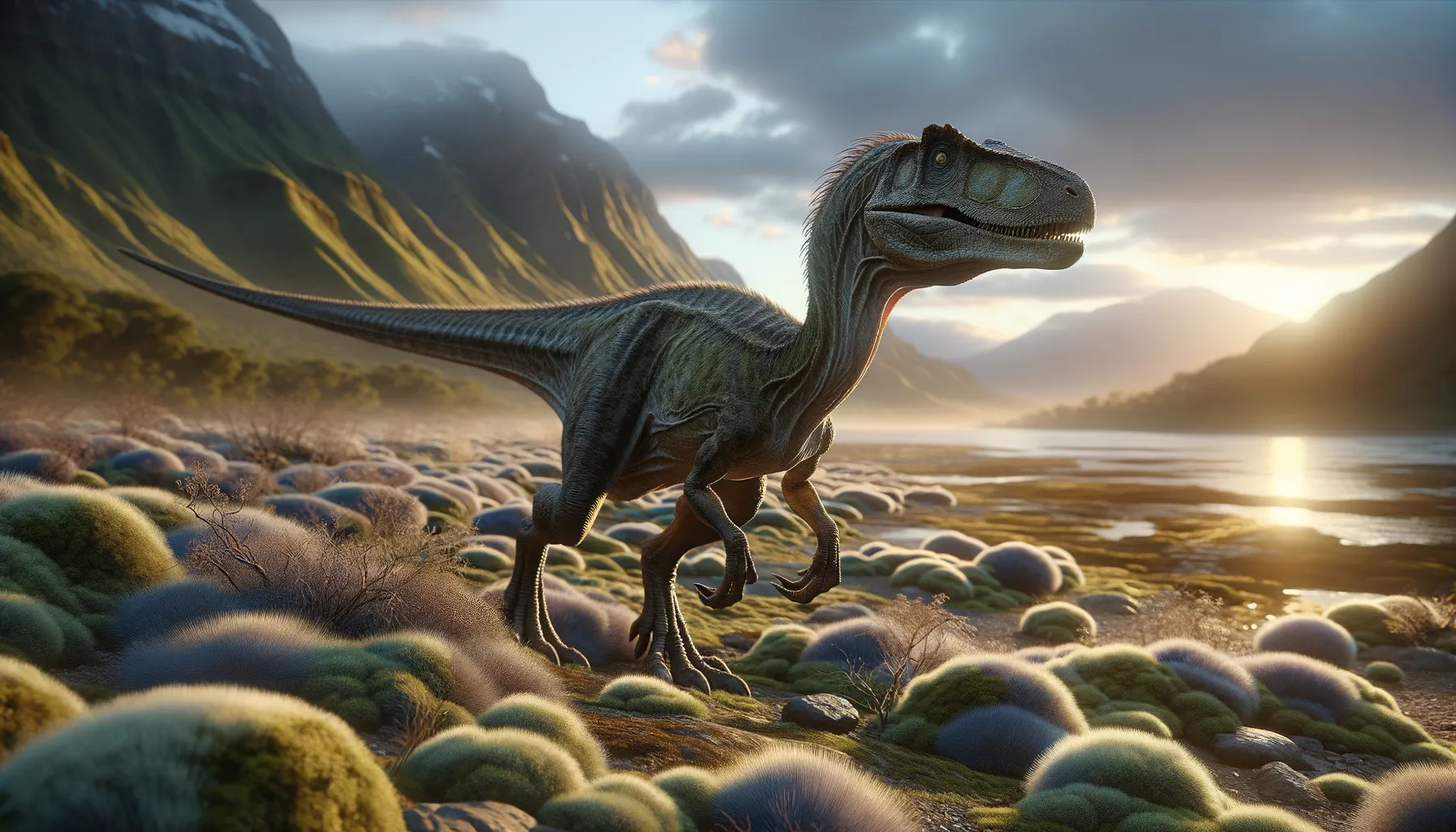
Graciliraptor
Speedy predator with ancient roots.
Period
Cretaceous
Length
Approximately 1.5 meters long.
Height
Roughly 1 meter tall.
Weight
Around 25 kilograms.
Graciliraptor, a small theropod dinosaur, roamed the lands of what is now northeastern China during the Early Cretaceous period. Its slender build suggested a fast and agile lifestyle, ideal for avoiding predators and hunting small prey. This carnivorous dinosaur is notable for its long limbs and tail, contributing to its swift movements. As one of the earliest members of the dromaeosaurids, it offers valuable insights into the evolutionary path of later, larger raptors.
Diet
Graciliraptor primarily fed on small animals, including mammals and other dinosaurs. Its sharp teeth and claws allowed it to effectively catch and consume its prey.
Hunting
This dinosaur employed stealth and speed to catch its prey. Its agile movements and quick reflexes made it a proficient hunter, often targeting small, quick-moving animals.
Environmental challenges
Graciliraptor faced numerous environmental challenges, including fluctuating climates and competing predators. Natural disasters such as volcanic eruptions could also alter its habitat. These challenges required adaptability and resourcefulness for survival. The competition for limited food resources would have been another significant pressure.
Speed
Moderate, with agility for quick escapes.
Lifespan
Approximately 10 to 20 years in the wild.
First discovery
Found in Liaoning, China in 2004.
Fun Facts
- Graciliraptor was a small, feathered dinosaur that lived during the early Cretaceous period.
- This dinosaur's name means 'slender thief', reflecting its light and agile build.
- Graciliraptor was likely a skilled hunter, using its speed to catch small prey.
- It had long, feathered arms which suggest it might have been capable of some form of primitive flight or gliding.
- Fossil evidence of Graciliraptor has been primarily found in what is now China.
- Graciliraptor's discovery has helped scientists understand more about the early evolution of raptors.
- With a length of just over 1 meter, Graciliraptor was one of the smaller members of the dromaeosaurid family.
Growth and Development
Juvenile Graciliraptors likely experienced rapid growth during the early stages of their lives. Fossil records show changes in bone structure as they aged, indicative of fast growth rates. This rapid development would have helped them reach maturity and defend themselves against predators.
Habitat
Graciliraptor inhabited lush forested environments with abundant vegetation and diverse fauna. These forests provided ample cover from larger predators and plenty of opportunities for hunting. The warm and humid conditions of the Cretaceous period also supported a wide range of species, making it a biodiverse habitat.
Interaction with other species
Graciliraptor coexisted with various other dinosaur species, small mammals, and birds. It likely had intricate relationships within its ecosystem, both as a predator and, at times, prey. Its small size meant it had to carefully navigate interactions with larger, more dangerous dinosaurs.
Natural lifespan
Its natural lifespan was likely around 15 years.
Reproduction
Like many dinosaurs, Graciliraptor reproduced by laying eggs. The young were likely dependent on adults for protection and perhaps feeding during their early days. Nesting sites would have been strategically chosen for protection and proximity to food sources.
Social behaviour
Graciliraptor may have exhibited some degree of social behavior, possibly hunting in pairs or small groups. Communication amongst individuals might have been important for coordinating movements and hunts. However, evidence of solitary behavior is also possible, especially in regions with scarce resources.
Fossil locations
Fossils of Graciliraptor have primarily been found in the Liaoning Province of China. This region is known for its well-preserved dinosaur fossils, particularly from the Early Cretaceous period. The discovery of these fossils has significantly contributed to our understanding of dinosaur diversity and evolution in Asia.
